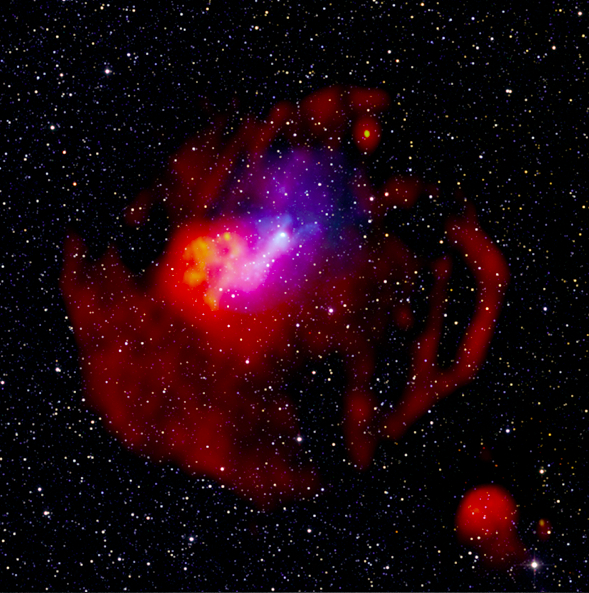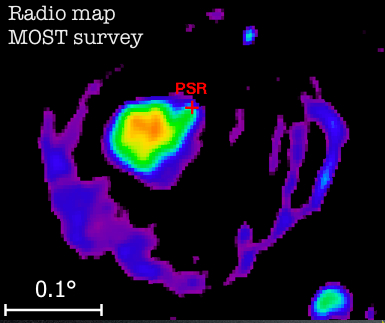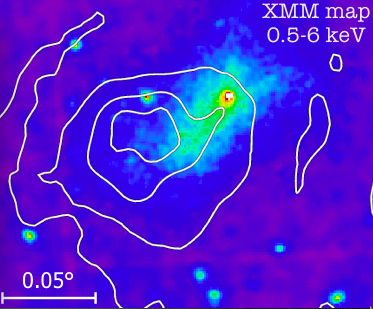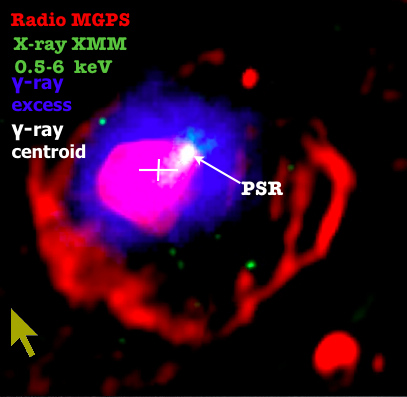A pulsar wind nebula in SNR G327.1-1.1
November 2011

G327.1-1.1 is a composite supernova remnant, at distance of about 9 kpc. The supernova shell is seen as a faint structure in the MOST 843 MHz radio image (top image, red, and Fig. 1). The age of the remnant is estimated to about 18000 years. At the center of the remnant, the bright radio emission (top image, red/yellow and Fig. 1) and X-ray emission (top image, blue, and Fig. 2) represents a a pulsar wind nebula, fed by electrons accelerated in the magnetosphere of a pulsar created in the supernova explosion. While no pulsation is yet detected in radio or X-rays, the pulsar is identified as the compact X-ray source located at the end of the radio "finger", see Fig. 2, offset from the radio nebula (Temim et al. 2009). The compact X-ray source is embedded in a cometary structure (Fig. 2).
A plausible interpretation is that the pulsar is rapidly moving away from its birth place, giving rise to a bow shock and the X-ray and radio trail. While the X-rays trace recently injected highest-energy, short-lived electrons, the radio nebula corresponds to lower energy electrons accumulated since the earlier stages of pulsar history. The position difference between pulsar and radio nebula could be attributed to pulsar motion, to a deformation and shift of the radio nebula by the ``reverse'' shock moving inwards from the expanding supernova shell (Bondin et al. 2001) or a combination thereof.
With an estimated spin-down energy of a few 10^37 erg/s, G327.1-1.1 would be expected to show detectable very high energy gamma ray emission. In 46 h of H.E.S.S. data, indeed a 8 sigma signal is observed. The gamma ray emission coincides with the radio nebula; no emission is seen from the supernova shell (Fig. 3). The gamma rays have a hard spectrum, with a spectral index around 2.1, extending beyond 10 TeV, with a flux of about 1.5% of the Crab flux. The centroid of the gamma ray emission is shifted slightly towards the pulsar (white cross in Fig. 3). Like the radio emission, the gamma rays trace lower energy electrons and reveal the full history of the pulsar wind nebula, whereas the high-energy X-ray emitting electrons probe the recent past.
Reference: "H.E.S.S. observations of the finger nebula", H.E.S.S. collaboration, F. Acero et al., submitted to the 32nd International Cosmic Ray Conference, Beijing, 2011.


